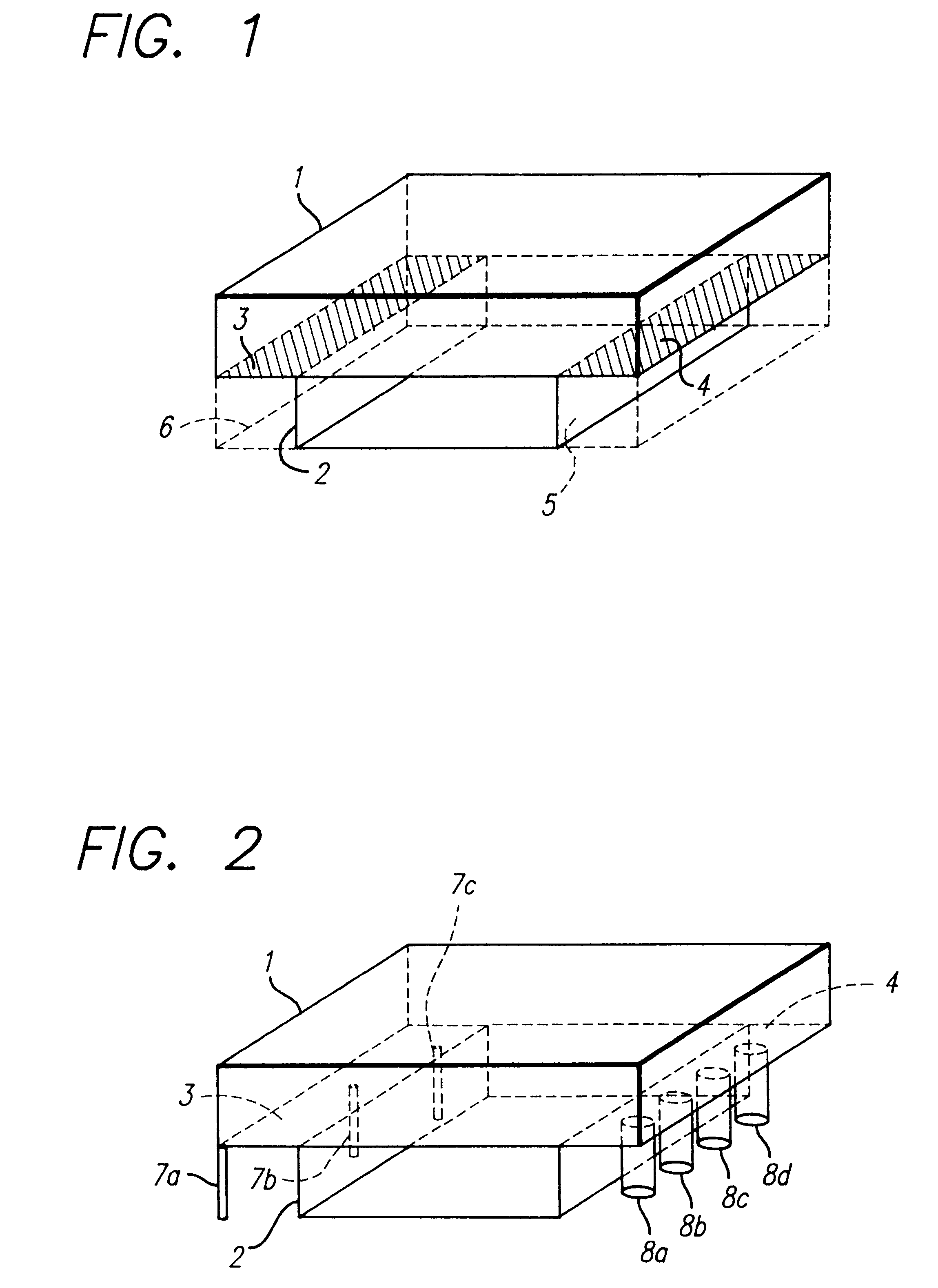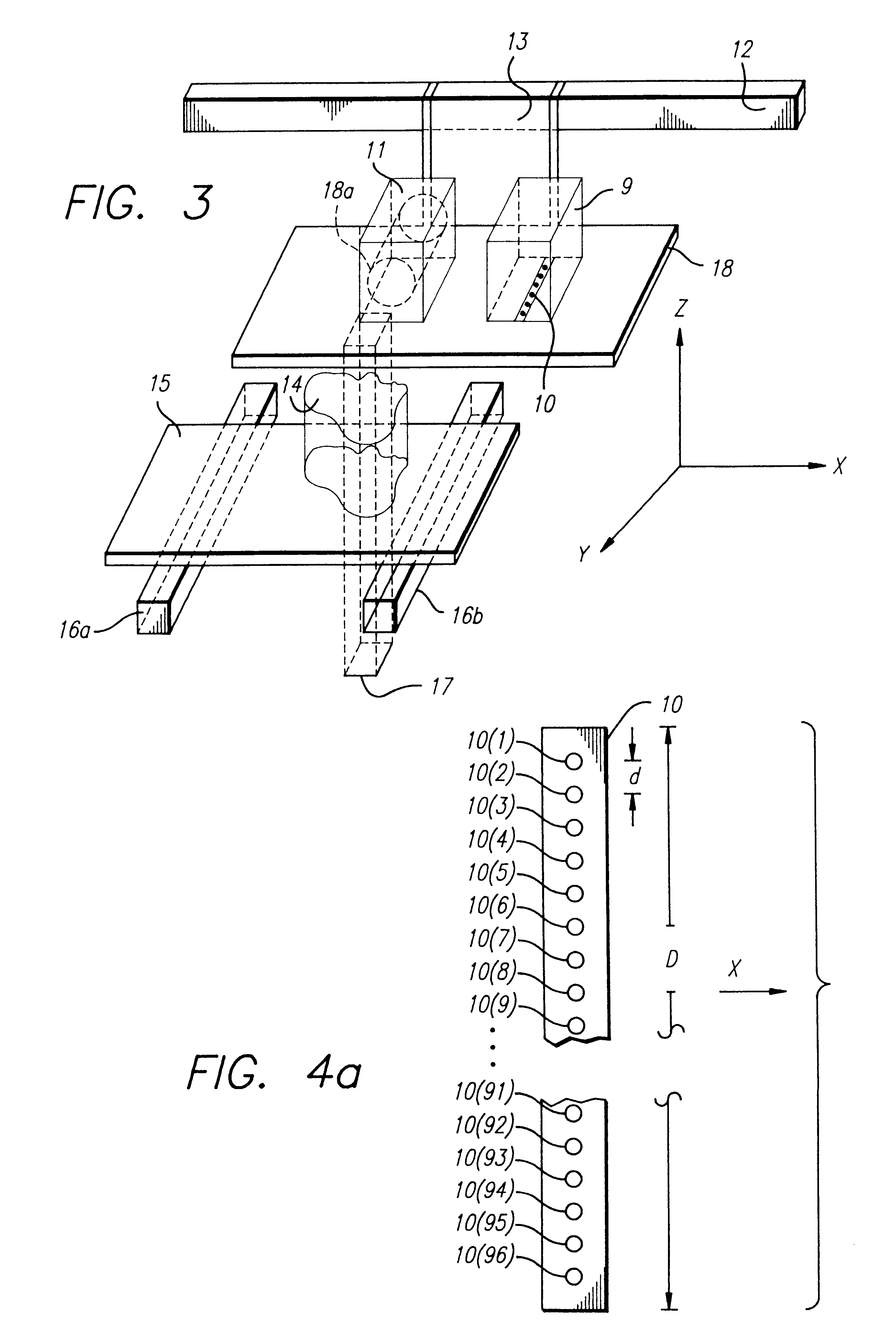Selective deposition modeling method and apparatus for forming three-dimensional objects and supports
a three-dimensional object and selective deposition technology, applied in additive manufacturing processes, manufacturing tools, coatings, etc., can solve the problems of unsatisfactory support function, unsolidified material is not available to perform the support function, and nothing is available to provide a working surface for or to suppor
- Summary
- Abstract
- Description
- Claims
- Application Information
AI Technical Summary
Benefits of technology
Problems solved by technology
Method used
Image
Examples
second embodiment
A second embodiment involves the following preferred steps: 1) forming a layer; 2) optically detecting a misfiring jet; 3) rescanning the lines on the layer that should have been formed by the misfiring jet; 4) ceasing the use of the misfiring jet in the remainder of the building process; and 5) scanning subsequent layers while compensating for the misfiring jet (i.e., make extra passes with a working jet to cover the lines corresponding to the misfiring jet). Optionally, the misfiring jet may be periodically checked to see if it has started functioning again. If so, this jet is put back into operation. Another option involves putting a misfiring jet through a reactivation routine to see if it can be made operational. This could occur during the building process or during servicing of the system. As a further alternative, it may be possible to determine whether or not a jet is firing correctly by tracking the electrical characteristics of the piezo electric element as firing is to o...
third embodiment
A third embodiment might involve the use of a flexible element for wiping excess material from the bottom of the print head. This embodiment involves the firing of all the jets followed by a wiping of the orifice plate with a heated rubber (e.g. VITON) blade. Preferably the blade is positioned such that it contacts the orifice plate as they are relatively moved passed each other thereby causing a squeegee action to remove excess material from the orifice plate and hopefully revitalizing any jets which were not behaving properly. It is further preferred that the orifice plate and blade be positioned at an angle to each other such that at any one time during their contact only a portion of the orifice plate is in contact with the squeegee thereby minimizing the force the blade exerts on the orifice plate.
The orifice plate 10 is mounted on the dispensing platform 18 such that droplets of material are allowed to emit from the underside of the dispensing platform 18. The orifice plate 10...
PUM
| Property | Measurement | Unit |
|---|---|---|
| Thickness | aaaaa | aaaaa |
| Flow rate | aaaaa | aaaaa |
| Area | aaaaa | aaaaa |
Abstract
Description
Claims
Application Information
 Login to View More
Login to View More - R&D
- Intellectual Property
- Life Sciences
- Materials
- Tech Scout
- Unparalleled Data Quality
- Higher Quality Content
- 60% Fewer Hallucinations
Browse by: Latest US Patents, China's latest patents, Technical Efficacy Thesaurus, Application Domain, Technology Topic, Popular Technical Reports.
© 2025 PatSnap. All rights reserved.Legal|Privacy policy|Modern Slavery Act Transparency Statement|Sitemap|About US| Contact US: help@patsnap.com



